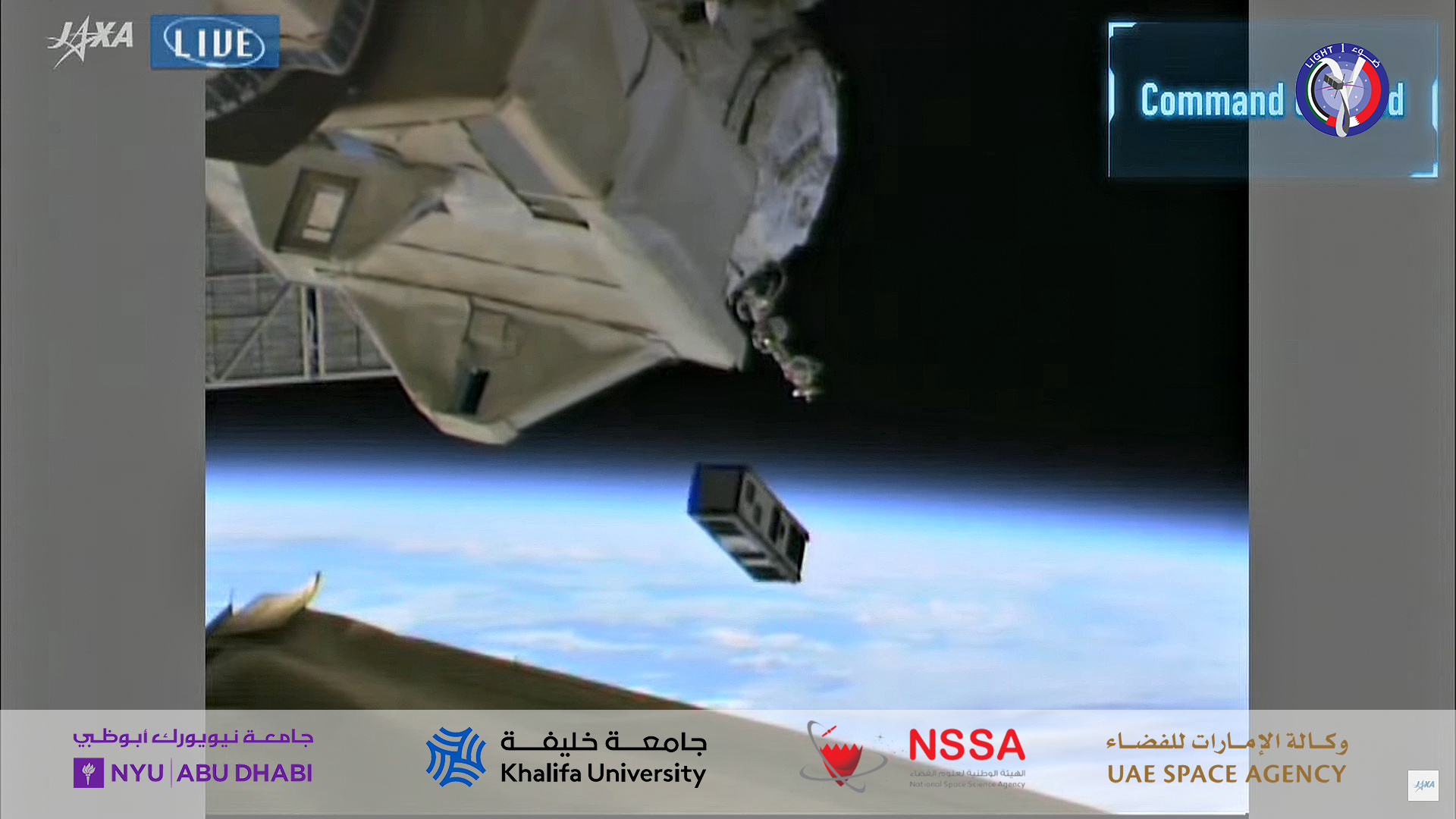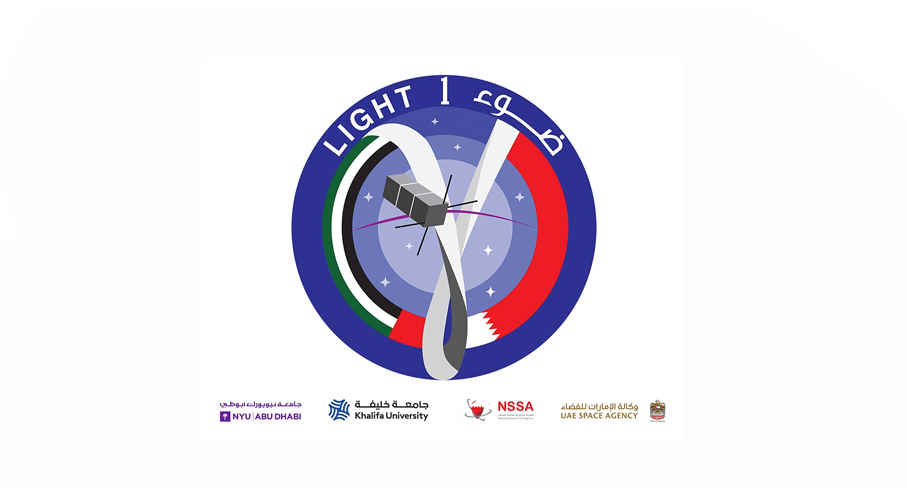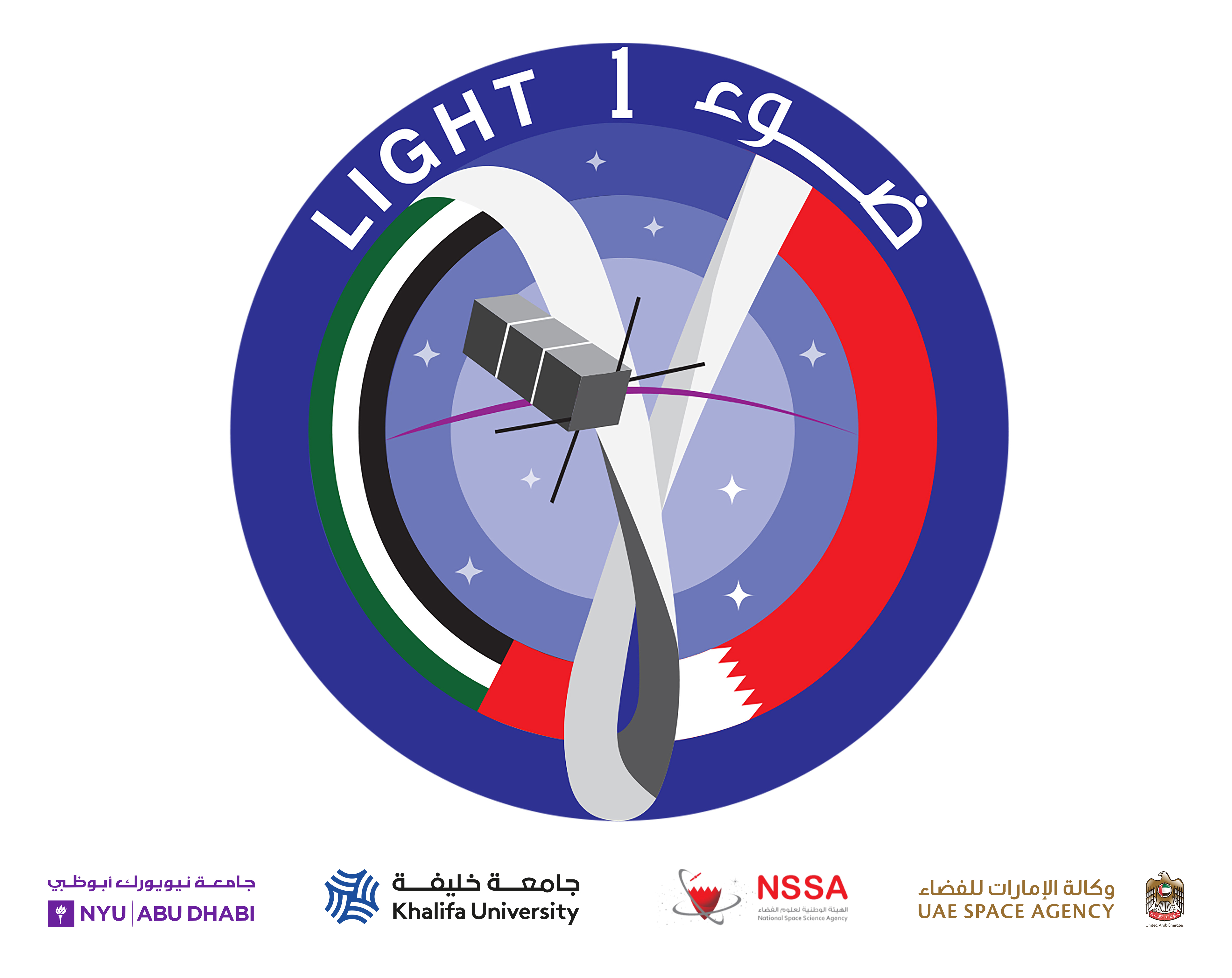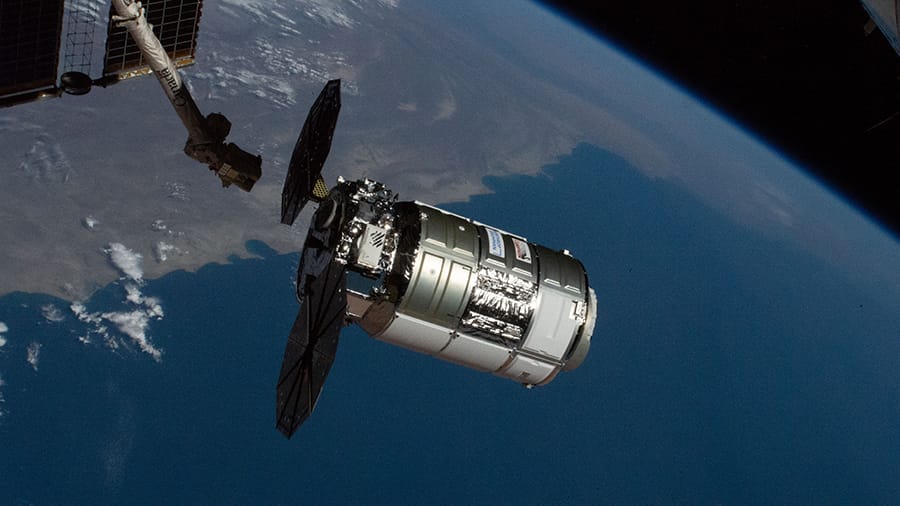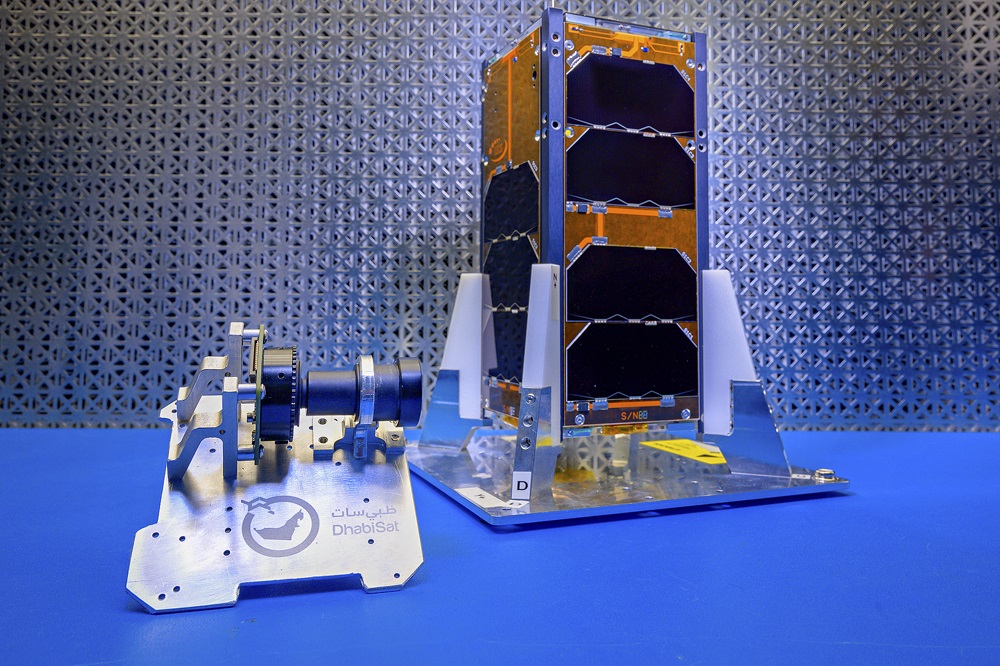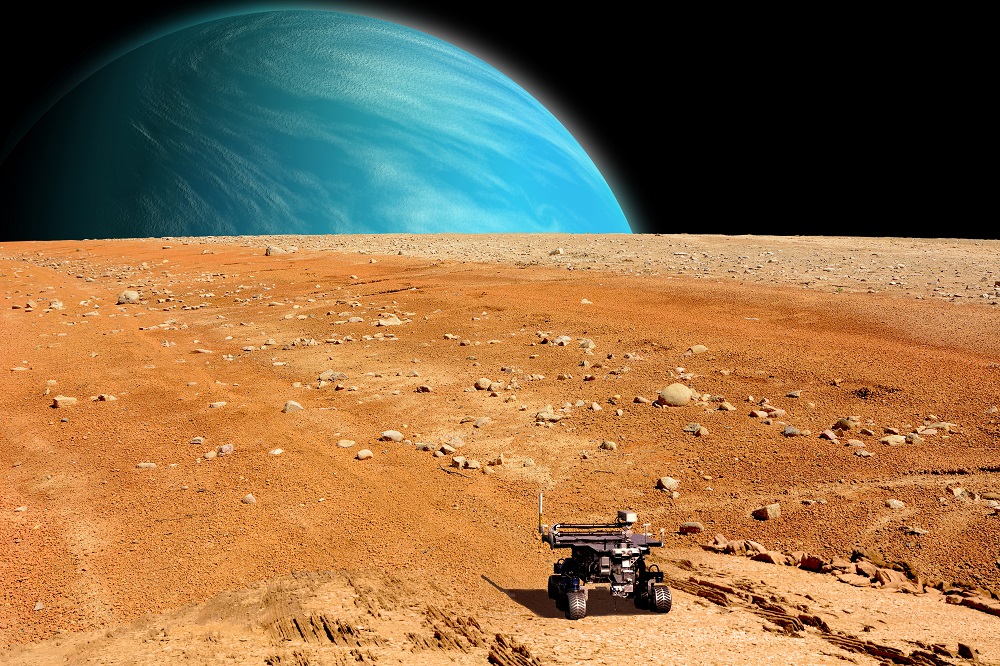
To help vehicles navigate their way around the solar system, Dr. Daniel Choi is leading a team to develop a novel micro-electromechanical system gyroscope and magnetometer for a miniaturized space attitude control system
Rough terrain is tricky for anybody to navigate let alone an autonomous vehicle. A human walking across a rough terrain can instinctively adjust movements to stay upright; robots lack this instinctive balance. More than simply staying upright, an unmanned vehicle on a far-flung planet would need to keep its antenna accurately pointed towards Earth for communications; keep its data-collecting instruments precisely pointed for accurate onboard experiments and interpretation; and optimize heating and cooling effects of shadow and sunlight for thermal control.
To help vehicles navigate their way around the solar system, Dr. Daniel Choi, principal investigator and Associate Professor of Mechanical Engineering and Dr. Ibrahim Elfadel co-investigator and Professor of Electrical Engineering and Computer Science at Khalifa University, are leading a team comprising Dr. Ru Li, Eng. Dima Ali and graduate student, Muneera Al-shaibah, to develop a novel micro-electromechanical system (MEMS) gyroscope and magnetometer for a miniaturized space attitude control system.
An unmanned ground or aerial vehicle needs a robust and reliable system in place to keep it functional once it has left terra firma on Earth. If the robot should need help stabilizing on rocky ground, a planetary mission would be hampered by the communications delay imposed by the enormous distance between earth and space-faring robots. Even at its maximum speed of 5.2 megabits per second (Mbps), message from the Mars Reconnaissance orbiter (MRO) a single high-resolution image takes 90 minutes to be sent back to Earth. If a UGV had to wait for this information every time it encountered a large rock it wasn’t sure how to navigate, it would take an inordinate amount of time for any mission to be completed.
Much of the communication difficulty could be solved if the technology sent into space were autonomous, with the necessary tools designed by teams like the one led by Dr. Choi at Khalifa University.
“This research project is the first to be sponsored by the UAE Space Agency since the agency was established in 2014,” said Dr. Choi. “We started this project in December 2017, aiming to design, fabricate, and characterize a MEMS gyroscope and magnetometer to be used in inertial measurement units (IMU) of space altitude control systems.”
Attitude control is the process of controlling the orientation of an vehicle with respect to an inertial frame of reference or another entity, such as the celestial sphere. In aviation, this is traditionally the Earth’s horizon. Controlling vehicle attitude requires sensors to measure vehicle orientation, actuators to apply the torques needed to orient the vehicle to a desired attitude, and algorithms to command the actuators based on sensor measurements and specification of the desired attitude.
Gyroscopes are devices that measure or maintain rotational motion. When things rotate around an axis, they have angular velocity which is measured in degrees per second or revolutions per second. Angular velocity is simply a measurement of the speed of rotation. MEMS gyroscopes are small, inexpensive sensors that measure this angular velocity. They are found in most autonomous navigation systems: balancing a robot can involve a gyroscope measuring rotation from a balanced position and sending corrections to a motor.
MEMS gyroscopes are used in automotive roll-over prevention and image stabilization as well as many other applications.
One key process in designing a system pertaining to attitude control is the mathematical modelling of the vehicle dynamics and environmental influences. Everything is tested and analyzed under simulated space conditions.
A MEMS gyroscope device includes a vibrating structure which determines the rate of rotation. When the gyroscope is rotated, a small resonating mass is shifted as the angular velocity changes. This movement is converted into very low-current electrical signals that can be amplified and read by a host microcontroller to control a ship’s attitude.
“Our team was able to fully characterize the MEMS gyroscope device by finding its resonance frequency, or frequency of maximum oscillation amplitude,” explained Dr. Choi. “Before testing, intensive simulations were done to find the resonance frequency. This involved actuating the proof or test mass of the device by applying the optimum amount of direct current.”
The simulations showed a frequency at which the gyroscope shows a resonant peak of 47.7 KHz, while testing showed a value of 46.6 KHz. With a percentage error of just 2.2 percent, the team concluded they had successfully tested their design.
“In addition to the MEMS gyroscope, the team has also been testing the MEMS magnetometer,” said Dr. Choi. “The design has been successfully tested for static capacitance and resonance frequency in both ambient and vacuum conditions.”
A magnetometer is a device that measures magnetism—the direction, strength, or relative change of a magnetic field at a particular location. In an aircraft’s attitude and heading reference system, they are commonly used as a heading reference. As magnetometers are miniaturized to be incorporated in integrated circuits, they are finding increasing use as miniaturized compasses. In a MEMS magnetometer, a change in voltage or resonant frequency can be measured electronically.
“We have confidence in our circuit and designs and are currently working on improving and optimizing them for operations,” said Dr. Choi. “The next step is to design and fabricate application-specific integrated circuits (ASIC) for implementing these devices in upcoming space missions.”
Jade Sterling
News and Features Writer
23 March 2020


